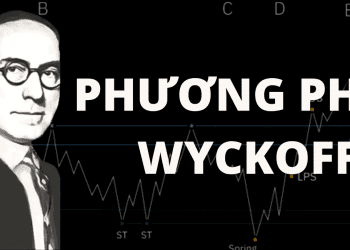The wealth effect significantly influences financial markets and economic dynamics by capturing how perceptions of wealth affect consumer behavior, savings, and spending patterns. Key concepts such as the marginal propensity to consume (MPC) and behavioral economics offer insights into these fluctuations. Throughout these discussions, we will explore how shifts in perceived wealth impact economic activity and policy-making, offering valuable lessons for traders, investors, and business owners.
Nội dung bài viết
- 1 Understanding the Interplay Between Wealth Effect and Consumer Spending: The MPC Factor
- 2 Unraveling the Wealth Effect Through Behavioral Economics
- 3 Decoding the Wealth Effect: How Perceived Wealth Shapes Economic Activity
- 4 Navigating the Waves: Wealth Effects on Consumer Spending
- 5 Navigating Wealth Effect in Economic Policy
- 6 Final thoughts
- 7 About us
Understanding the Interplay Between Wealth Effect and Consumer Spending: The MPC Factor

The marginal propensity to consume (MPC) plays a pivotal role in the wealth effect, illuminating how shifts in asset values convert into changes in consumer spending. Essentially, MPC is the fraction of any additional income that gets spent rather than saved. A higher MPC amplifies an individual’s reaction to perceived wealth changes, meaning as assets like real estate or stocks rise in value, consumers are inclined to spend more eagerly.
This phenomenon is more pronounced among lower-income groups, who typically have a higher MPC. Such individuals are more responsive to wealth fluctuations, prioritizing immediate consumption over savings. In contrast, wealthier individuals, who generally have a lower MPC, tend to save any additional income, leading to a muted wealth effect.
Economic policies can harness this relationship for growth. Lower interest rates, for instance, elevate asset prices, indirectly boosting consumption by increasing household wealth through higher MPCs. Targeted fiscal policies like tax cuts for low-income households can further enhance demand, leveraging their higher MPC to stimulate quicker economic revitalization. Understanding these dynamics helps policymakers and economists in crafting strategies that effectively channel wealth-induced spending into broader economic development.
Unraveling the Wealth Effect Through Behavioral Economics

Behavioral economics provides a crucial lens through which we can understand the wealth effect, especially when it comes to how individuals perceive and react to fluctuations in their wealth. By integrating insights from psychology, this field unveils the irrationalities in economic behavior that traditional theories might overlook.
One fundamental principle is loss aversion, where the pain of losing is felt more acutely than the joy of gaining the same amount. This can lead to a magnified wealth effect, causing heightened reductions in spending when asset values drop. Another aspect, mental accounting, refers to how people divide their finances into separate ‘accounts’ based on different factors like the source of money or its intended use, influencing spending choices disproportionately.
Consumer confidence is intrinsically tied to perceived wealth; as asset values rise, so does spending, even if actual income hasn’t increased. This phenomenon underscores the importance of understanding financial psychology. For practical wealth management insights, you might explore financial planning strategies to better navigate these biases.
By acknowledging these behavioral factors, policymakers and individuals alike can develop strategies to mitigate impulsive financial decisions and manage economic disparities more effectively.
Decoding the Wealth Effect: How Perceived Wealth Shapes Economic Activity

The wealth effect plays a pivotal role in economic dynamics, significantly influencing both personal and broader economic behaviors. A key mechanism at play is the direct impact on consumption through perceived wealth. When individuals observe an increase in the value of their assets—such as stocks or real estate—they often feel richer and enhance their consumption, regardless of their actual income levels.
Another essential aspect involves intertemporal substitution of consumption, where anticipated future wealth leads people to borrow more today, boosting current consumption based on expected future gains. This behavior effectively accelerates spending, impacting immediate economic growth.
The wealth effect also stimulates the aggregate demand channel by increasing consumer spending as real money balances rise, lowering interest rates, and making domestic goods more appealing abroad. This comprehensive impact triggers a ripple effect, encouraging businesses to invest more when consumer demand is high, ultimately driving economic expansion.
Overall, these mechanisms highlight how shifts in perceived wealth prompt changes in consumption patterns, borrowing habits, and investment decisions, bolstering macroeconomic activity. Understanding these dynamics is crucial for developing sound financial strategies and policies, as seen in articles such as Smart Financial Thinking.

The wealth effect intricately links asset values to consumer spending dynamics, acting as a barometer for economic activity. When asset prices soar, consumers feel their wealth burgeon, triggering a positive wealth effect. This perception of increased affluence propels discretionary spending, exemplified by the significant surge in service expenditures by the top earners in recent years. Such optimism stimulates credit expansion, with higher collateral values making borrowing more accessible and sustaining an air of economic resilience.
Conversely, a downturn in asset values casts a shadow termed the negative wealth effect. As perceived wealth wanes, spending contracts, especially among those already economically vulnerable. Risk aversion takes hold, with consumers prioritizing essentials and shying away from substantial investments. This leads to increased wealth inequality, as lower-income groups bear the brunt of economic shocks.
Understanding these nuances is pivotal for policymakers. They can influence consumer behavior through strategies like interest rate adjustments, crucial during volatile economic periods. By studying wealth effects, both positive and negative, individuals and nations can better grasp how asset market movements shape broader economic landscapes. For a deeper dive into how these phenomena intersect with personal finance strategies, explore our guides on financial planning.

The wealth effect, the phenomenon where changes in asset values influence consumer spending, has profound implications for economic policy. Policymakers keep a close eye on this effect as it directly impacts aggregate demand and economic stability.
When asset values rise, such as during a housing market boom, consumer spending often increases. This boost in spending can drive economic growth and inflation, pushing central banks to consider tightening monetary policy by raising interest rates. However, this effect isn’t always positive. The surge in spending might lead to asset bubbles and widen wealth gaps, as seen among higher-income households who benefit more from asset appreciation.
On the flip side, a negative wealth effect can occur when asset values decline. This often leads to reduced spending, exacerbating economic slowdowns, much like the 2008 financial crisis. This dual-edged nature poses challenges for policymakers, who may need to balance monetary policy adjustments with fiscal interventions, such as tax reliefs or stimulus packages.
Furthermore, the wealth effect emphasizes the inequality in wealth distribution, urging policymakers to craft strategies that support social mobility. Understanding the complexities of the wealth effect is crucial for shaping effective economic policies that foster stability and equitable growth. For further insights into managing economic challenges, explore stagflation causes and impact.
Final thoughts
The wealth effect intricately channels perceptions of affluence into broader economic trends, influencing consumer behavior and policy-making. By understanding how perceived wealth affects spending, savings, and economic policies, financial stakeholders can better navigate these dynamics. Exploring these dimensions can provide valuable insights for traders, investors, and SME business owners seeking to make informed financial decisions.
Want to manage your finances effectively and invest smarter? Discover the best solutions on trananhthuc.com and start your journey to financial freedom today!
About us
trananhthuc.com provides financial, investment and banking credit solutions, helping you manage cash flow effectively, optimize loans and increase profits. We share practical strategies, useful tools and in-depth knowledge to help you conquer financial freedom. Explore now to make smart decisions and maximize investment opportunities!







